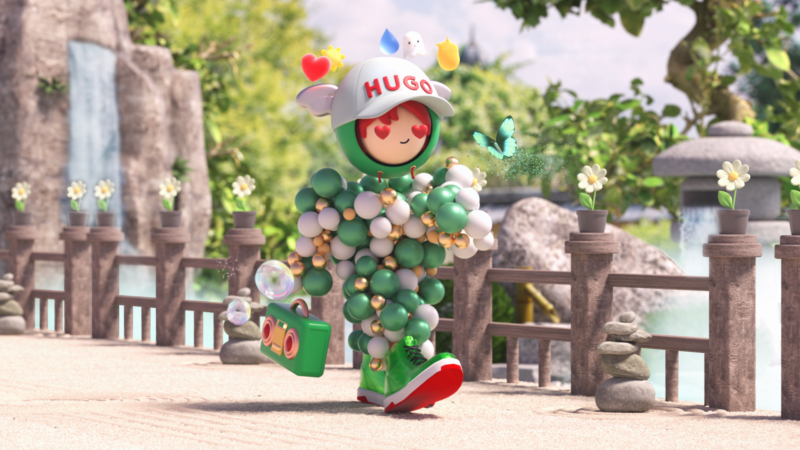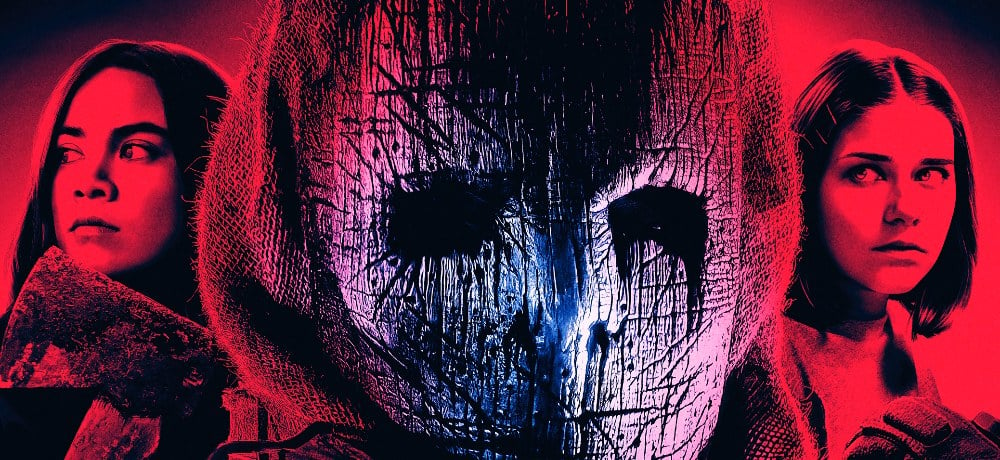Critic’s Rating: 2.5 / 5.0
2.5
If Apple TV+’s Time Bandits proves one thing, it’s that repackaging the same story over and over again is an exercise in apathy.
As the title suggests, Time Bandits Season 1 Episodes 3 and 4 cover the Middle Ages and late 1920s Prohibition. Both were exciting eras in their own unique ways.
If there’s one thing we learn about history, it’s that technological advancements aside, nothing else changes much.


The Prohibition era is merely a reskinned variation of Medieval times, albeit with Tommy guns instead of a longsword.
You can change the wallpaper background on your iPhone, but it’s still an iPhone underneath. It’s doubtful this is a purposeful theme. Taika Waititi’s Harlem Prohibition era may look neat, but it’s still his Time Bandits beneath.
Related: Presumed Innocent Renewed for Season 2 at Apple TV+
Apple’s Emblematic Cinematography and Detail
Apple is spending a lot of money on its content, and it shows. The sets are full of intricate details. If you didn’t know the titles of the episodes going in, the visuals are effective enough to give it away.
From the shabby, gray-washed colors of medieval serf clothing to the pinstripe suits and obligatory fedoras of the ’20s, it all looks and feels fantastic.
This is no different from the original Time Bandits, despite the more grainy appearance of yesterday’s film technology.


The moment Penelope and crew come crashing down into a peasant’s house, you know you’re in for superstitions, zealous belief systems, ridiculous suspicions, and the unwashed mob.
Unfortunately, this isn’t truly reflective of society in the Middle Ages, but Time Bandits sticks to over a century of Tinseltown’s version of Medieval history.
The Prohibition jump in Time Bandits episode 4 is no different. Jazz music permeates the atmosphere, even when you can’t hear it. The words “Tommy gun” hover in the back of the mind long before one actually appears.
Most shows on Apple TV+ pay close attention to the finer details, from the micro to the macro, and Time Bandits is no different.
Time Bandits Take On the Middle Ages (A Small Part of It)
Each episode is surprisingly short, unlike some of Apple TV+’s other offerings (each episode of Severance feels like a theatrical movie).


That said, our journey through the darker period of European history is quick. The haste of the episode’s passing is prevalent in the storytelling as well, which reduces the overall impact.
It’s also clear that some of the scenes and later editing were hasty and roughshod. In one scene, a character throws down his sword before seeking out the Sheriff.
Related: Virgin River Season 6 Cast & Character Guide
Only moments later, he finds the Sheriff, and his sword is clearly back on his hip. It’s not as egregious as the infamous Starbucks cup of coffee in Game of Thrones Season 8, but it’s not the only hiccup in the two episodes.
If you’re this far in, you’re familiar with Waititi’s style by now, which is to say there is only one — endlessly laconic.
They hide any moment of levity well. Every word, utterance, idea, move, mannerism, and action is humorous or an attempt at humor.
There’s nothing wrong with Taika Waititi’s sense of humor, only with its overwhelming presence. Sure, it’s the theme of the entire show, but since Waititi’s earlier Indie offerings, the saturation level has been continually climbing.


There’s little need for a plot synopsis for episode 3. If you’ve seen Time Bandits Season 1 Episode Episode 1 and Time Bandits Season 1 Episode 2, you know the gig.
Time Bandits land in a new area; confusion settles in, gaffes galore, suspicions abound, and the bandits somehow wriggle their way out of the situation they largely create.
Prohibition Era in Harlem
The Time Bandits rarely fit in, regardless of the party they attend. Prohibition is no exception. It also reveals the large degree of ignorance they share amongst themselves. None of them have any idea what money is.
Thanks to their time-jumping capabilities, the bandits could transport medieval, honey-fertilized mead by the gallon into late 1920s America.
As you might expect, this is a highly lucrative coincidence. Speaking of coincidences, this is another problem with Time Bandits — convenience to the plot.


Up to this point, the portal came and went at random, never remaining in one place for long. Here, however, when they need the money and there is a transactional opportunity, the portal remains.
As head-scratching as this is, one of the gangsters then drinks from a corked bottle, and the audio overlay of his drinking sound is so obvious it’s cringeworthy.
The plot in this era is the same as the last, with the party of thieves creating and escaping the problem.
Related: Cate Blanchett and Kevin Kline Star in Disclaimer from Apple TV+. Here’s Your First Look!
Time Bandits is Telegraphing and “Subverting Expectations”
The very end of Episode 4 gives away the game. The Supreme Being wishes to wipe out his creation and start over with something new.
In the space of three minutes, we already know where everything will end up. Pure Evil may not become the ultimate hero of the story, but the Supreme Being will certainly become the villain.


This ultimately leads us down a path of human transcendence. We are above good and evil, even though the show spends a good deal of time blasting humanity for its never-ending ignorance and fumbling ineptitude.
Kevin carries both of his parents in what he calls a “bum sack” ever since their demise in episode 2. They are now just two large lumps of coal that Kevin speaks to periodically in a sort of narrative format.
In a sense, and perhaps this is the intent, they are no different than their living pasts. Kevin’s parents were abusive, if not physically, in their complete nescience of Kevin and their harsh rebukes for all of his curiosities and pursuits.
In the meantime, Waititi’s version of Time Bandits does something the original version did not; it explores the possibility of their return while dragging his sister, Saffron, into the fray.
Perhaps these two alterations will breathe some life into what many consider a sour ending on the original’s part. Perhaps not. It’s worth mentioning, however, as the episodes are no longer purely focusing on Kevin and the Time Bandits.


Some Characters are Still Suffering Detachment
Penelope, Kevin, Bittileg, Widget, and now Saffron get plenty of screen time. Judy may as well be non-existent. Every brief moment with her is a surprise and a reminder that she is still there and, indeed, a part of the group.
Poor Judy’s lines are singular, infrequent, and seemingly a surprise even to her. It’s like catching someone on camera when they don’t expect it, yet they must utter their lines anyway.
Related: The Best Shows to Watch If You Like Solving Mysteries
She delivers with all the excitement of a log, leaning in and swinging her arms straight forward, saying her piece, and fading back into obscurity.
It’s a shame, really. Judy is a self-described emotional empath, which really opens things up to some hilarious possibilities. To say that she is underutilized is a restrained description.
Alto is nearly in the same camp, though he finally gets a semi-sub-plot in episode 4. Unfortunately, there’s very little emotional attachment to his plot, and it begins with a weak voice before ending in a whimper.
Ultimately…


Episodes 3 and 4 are moderately fun if you want to chuckle your way through roughly 36 minutes of screen time. It’s not that they’re bad, so much as that they lack excitement. The enjoyable view slightly mitigates the repetitive nature of each episode.
There’s little doubt that the show looks great. Episode 3 features a pterosaur, and even though we know it’s CG, it looks realistic in its movements, proportions, and speed.
Related: The Boys Universe Expands Again with Vought Rising Starring Jensen Ackles
The artistry involved is fantastic, and you’ll never feel detached from the show’s aesthetic appeal. However, the characters are a conundrum, to be sure. Imagine a new toy figure hits the shelves.
It’s brilliantly designed, with an awesome and inspiring aesthetic, but no one knows who the figure is or where it came from.


That’s how Kevin, Penelope, and the rest of the Time Bandits feel. Widget is a prime example. We know he has a past with the demon that’s chasing them, but it’s spoken of in such irreverent terms that it almost feels trivial (as much as knowing someone dated a demon can feel trivial).
The group also clearly repudiates the Supreme Being, and four episodes in, we could care less why. Time Bandits Episode 2 was a small step up from the first episode, as were 3 and 4. The latter two simply don’t do much with the gained ground.
With six episodes remaining, hopefully, Time Bandits will get the wheels spinning a little faster and give us something to chew on for a change.







![“Epitaphs from the Abyss” Delivers EC Tales With Contemporary Flavor [Review] “Epitaphs from the Abyss” Delivers EC Tales With Contemporary Flavor [Review]](https://wickedhorror.com/wp-content/uploads/2024/02/EC-ABYSScrop.jpg)



















